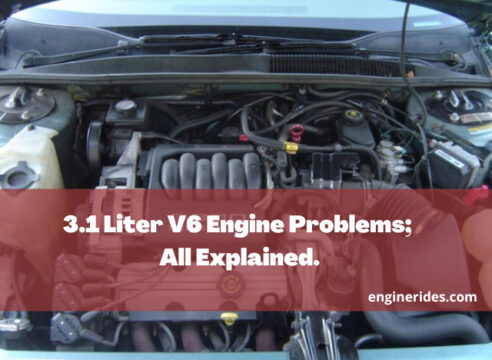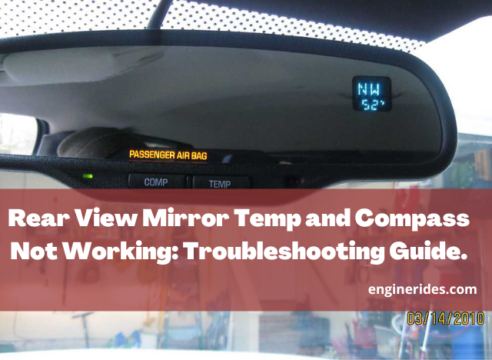Spare tires are your backup plan when you get a flat tire. This article explains why they matter and how to take care of them. We’ll talk about the right air pressure, why spare tires sometimes go flat, and how to prevent it.
You’ll learn why spare tires need higher pressure, how to check them, and why it’s important. Whether you’re a new driver or experienced, knowing about spare tires keeps you ready for unexpected bumps in the road. Let’s dive in and make sure your spare tire
Table of Contents
Should the spare tire be 60 psi on or off the Car?
The spare tire should be properly inflated to the recommended pressure whether it’s on or off the car. The recommended pressure for the spare tire is usually indicated on the tire itself or in the vehicle’s owner’s manual. In many cases, the recommended pressure for a spare tire is around 60 psi (pounds per square inch), but it can vary depending on the vehicle and tire type.

How much psi should a spare tire have?
The recommended psi (pounds per square inch) for a spare tire typically ranges between 60 to 80 psi, but it can vary depending on the vehicle and tire type. This information is often provided by the vehicle manufacturer and can also be found on the sidewall of the spare tire itself or in the owner’s manual.
Maintaining the correct tire pressure ensures optimal performance and safety in the event of a tire change. Regularly check the spare tire’s pressure, and if necessary, inflate it to the recommended psi. A properly inflated spare tire is essential for safe and reliable use during emergencies.
Why do spare tires generally have higher psi?
Spare tires generally have higher psi (pounds per square inch) ratings for a few reasons:
Storage Conditions
Spare tires are often stored for long periods, sometimes for years, before they are needed. A higher psi helps to prevent the tire from developing flat spots or deformities during storage, ensuring it remains usable when needed.
Emergency Situations
Spare tires are intended for temporary use in emergency situations, such as a flat tire. The higher psi provides additional stability and load-bearing capacity, allowing the spare tire to support the vehicle’s weight safely until a permanent replacement can be installed.
Tire Went Flat Overnight But Now Holds Air; What Could Be The Reason?
ENGINERIDES.COM
Different Vehicle Loads
Spare tires must accommodate various vehicle loads, including passengers, cargo, and fuel. A higher psi rating allows the spare tire to handle different load conditions effectively without compromising safety or performance.
Compact Design
Spare tires are often smaller and more compact than regular tires, making them more susceptible to damage from rough roads or potholes. A higher psi rating helps to enhance the tire’s resistance to punctures and impact damage.
Overall, the higher psi rating of spare tires ensures they remain reliable and effective in emergency situations, providing drivers with peace of mind and safety on the road.
Why Is My Tire Deflating When I Put Air In It? Let’s Check It Out
ENGINERIDES.COM
Why do spare tires go flat?
Spare tires can go flat due to various reasons, including insufficient maintenance, aging, and damage. Lack of regular inspection and maintenance can lead to gradual air loss over time. Additionally, spare tires are often stored for extended periods, which can cause the rubber to deteriorate and develop cracks, increasing the likelihood of air leakage.
Exposure to extreme temperatures, punctures, or improper storage conditions can also contribute to spare tire deflation. It’s essential to check spare tires periodically for proper inflation, damage, and signs of wear to ensure they remain functional and reliable in emergency situations.

Some related FAQs
How long can spare tire last?
Spare tires can last up to 10 years if properly maintained and stored. However, factors like exposure to sunlight, temperature fluctuations, and road conditions can impact their lifespan. It’s essential to inspect spare tires regularly for signs of wear, dry rot, or damage, and replace them as needed to ensure safety.
Can I drive on a spare tire for 2 days?
Yes, driving on a spare tire for two days is generally safe for short distances and at moderate speeds. However, spare tires are temporary solutions and not designed for long-term use. It’s crucial to replace the spare with a regular tire as soon as possible and avoid high-speed or extended driving on spare tires.
Can I reuse a spare tire?
Yes, spare tires can be reused if they remain in good condition, properly inflated, and have not exceeded their recommended lifespan. However, it’s essential to inspect the spare tire for signs of wear, dry rot, or damage before reuse. Replace the spare tire if any issues are detected to ensure safety on the road.
What to do after using spare tire?
After using a spare tire, it’s important to replace it with a regular tire as soon as possible. Inspect the regular tire for damage or the cause of the flat. Check the spare tire’s air pressure and condition, and if necessary, have it repaired or replaced. Ensure all tools and equipment are properly stowed.






